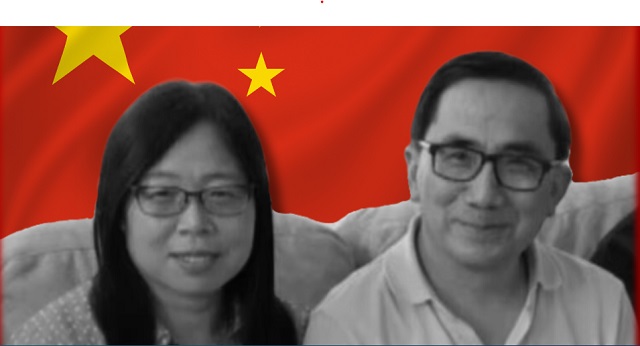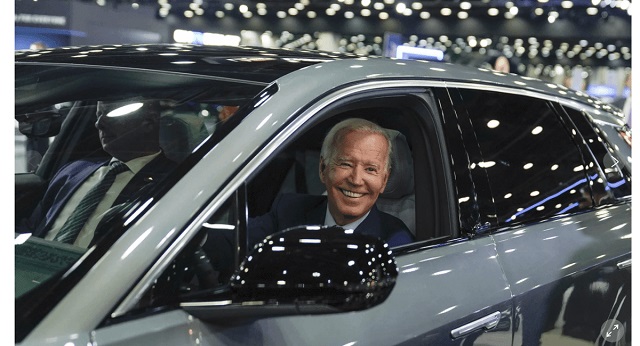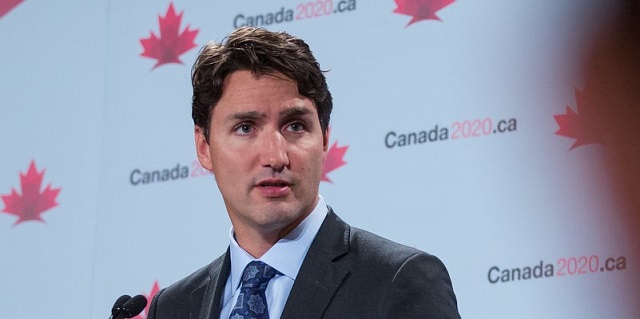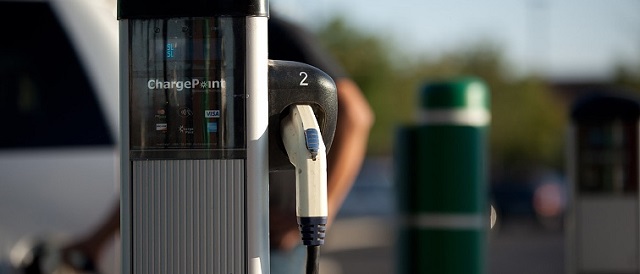Agriculture
European farmers continue to protest New World Order’s anti-food agenda
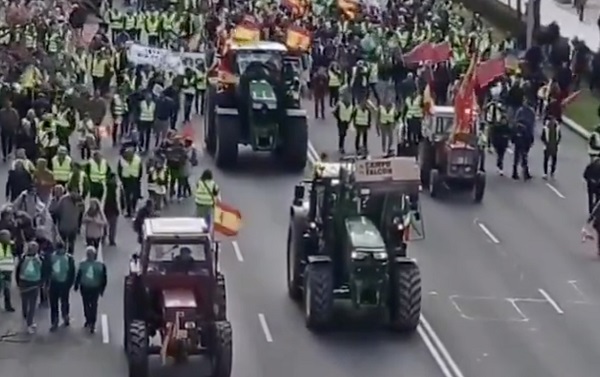
From LifeSiteNews
By Frank Wright
As the farmer-led protests in the EU rage on, globalists are slowly learning that labeling those demanding the ability to provide food for the future as ‘extremist’ is not going to work.
Farmer protests in Europe continue to escalate, with Belgian farmers blockading the capital yesterday, Monday February, 26, with 900 tractors and driving through police barricades.
Belgian farmers sprayed police with manure and lit bonfires with tires in a fiery day of action which saw barbed wire and anti-tank obstacles placed outside European Union institutions, and police dousing the crowd with water cannons.
The action comes days after a convoy of Spanish farmers lead an estimated 20,000 people to protest outside the Spanish Ministry of Agriculture.
The plea of one Spanish farmer at the February 21 protest was stark. Silvia Ruiz, 46, a livestock farmer from the north-central area of Burgos told The Associated Press.
It is impossible to live from the rural industry, which is what we want, to live from our work. That is all we ask for.
Video from Madrid showed the scale of the protest, at which AP said banners were displayed reading “Farmers in Extinction” and “There is no life without farming.”
#BREAKING #Spain Large-scale demonstrations by farmers are ongoing in the Spanish capital of Madrid. pic.twitter.com/RFbMt8Lgko
— The National Independent (@NationalIndNews) February 21, 2024
Spanish farmers conducted another four-day national action in early February, their complaints echoing what The Daily Telegraph called “common talking points from what has been an eruption of farmers protests in the Netherlands, France, Belgium, Germany, Poland, Greece, Italy and Spain over recent months.” Protests have also emerged in England and Wales in recent months.
Reasons to be fearful
The reasons given by farmers for their Europe-wide action present a direct challenge to the policies of European governments – which they say are resulting in extreme pressure on small-scale farmers. British farmers issued a desperate plea last September, saying they too were “struggling to survive.”
So what are the issues facing European farmers? This report examines the policies and practices which have combined to produce a hostile environment for Europe’s small scale farmers.
Agenda 21 – a coordinated effort?
Though the protests have many dimensions, including the imposition of carbon “Net Zero” related measures, with the removal of subsidies and the threat of cheap imports, some critics argue that small-scale farming across Europe is facing a systematic and coordinated attempt to replace them – with large-scale, state-controlled agriculture.
A documentary published by the Epoch Times in September 2023 argues that soaring food prices and food shortages “have little to do with climate change – but are the direct result of an environmental policy that was conceived over 30 years ago.”
The reference in the documentary, titled “No Farmers: No Food” is to“Agenda 21,” the United Nations’ “Master Plan for Humanity” for the 21st Century. Now renamed Agenda 2030, with that year being given as the target for the agenda’s implementation, it is a program that dates back as far as 1989.
The agenda’s seemingly laudable goals to “eradicate global poverty,” reduce consumer waste and combat the degradation of the natural world whilst promoting prosperity can be seen in another dimension.
An ‘excuse for government to do what they want’
Christian journalist Alex Newman says in the documentary that this noble-sounding agenda simply “gives government an excuse to do whatever they want, under the guise of meeting these goals.”
From its inception, the “master plan” demanded increased “trade liberalization,” the strengthening of “international institutions” backed by a series of “development banks” from government and private finance to drive accelerated global coordination.
Yet “trade liberalization” and a punitive regulatory environment are two factors cited by farmers across Europe which they say are threatening their very existence.
‘Green’ farmers also in protest
Farmers who support measures to limit pesticide use and the move to less polluting means of production have also mobilized to protest against “the neoliberal policies in agriculture the WTO has been promoting for decades which have led to the systematic impoverishment of farmers.”
A group called the European Coordination Via Campesina (ECVC), which represents small-holder farmers in 21 European countries, highlights the worsening struggle for survival faced by small-scale farmers. In a February 25 report, farmers Morgan Ody and Vincent Delobel spoke out in advance of the World Trade Organization’s 13th ministerial conference in Abu Dhabi.
These are the people who produce Europe’s food – whether conventionally or organically, on a small or a medium scale. They stand united by a shared reality: They are fed up with spending their lives working incessantly without ever getting a decent income. We have reached this point after decades of neoliberal agricultural policies and free trade agreements. Production costs have risen steadily in recent years, while prices paid to farmers have stagnated or even fallen.
The effect on small-scale farmers has been devastating – but beneficial for corporations.
“All the while, through mergers and speculation, large agroindustrial groups have gotten bigger and stronger, putting increased pressure on prices and practices for farmers.”
‘Like the Soviet Union’
This argument, coming from farmers supportive of sensible “sustainable development” measures, echoes a warning given by U,S, conservative scholar Victor Davis Hanson.
Hanson’s segment in “No Farmers: No Food” treats this issue as a matter of the concentration of food production in the hands of the state – or under its direction.
They feel that humans don’t need meat-based protein. They want to either force people to follow their paradigms – or they want to buy or accumulate farmland and that’s how they’re going to farm it.
It’s sort of like Mao’s cultural revolution or the Soviet Union – and it results in disasters.
At least 45 million people are said to have “been starved, tortured or beaten to death” under Mao’s “Cultural Revolution,” with the forced collectivization of farms in the Soviet Union contributing to a famine which caused the deaths of at least 3 million people between 1931 and 1934.
Hanson says this example does not deter the “academic mind,” which “always has the answers, but never in the real world.”
What is happening in the real world is, according to Hanson, the systematic global consolidation of farming in the hands of state and corporate power.
“They want large blocks [of farming] run by the government – or by private consortia” where meat can be largely eradicated by the control of agricultural production.
The real world action of Bill Gates
Hanson cites the example of Bill Gates’ purchase of large tracts of farmland, coupled with the stated objectives of his “philanthropic” organization.
The Bill and Melinda Gates Foundation had by 2017 granted an estimated $6 billion of investment in the future of farming according to one small farmer’s campaign group, GRAIN.
Its 2021 report argued that the foundation is “driving the food system in the wrong direction,” saying “[Gates’] funding overwhelmingly went to research institutes rather than farmers. They were also mainly directed at shaping policies to support industrial farming, not smallholders.”
Far from providing “the substantial flow of new and additional financial resources to developing countries” exhorted by the 1989 UN statement on Agenda 21, the Gates Foundation sends 80-90 percent of its funds to U.S. and Europe based NGOs, “buying political influence” and promoting a “corporate-industrial farming agenda.”
The funding patterns of Gates’ so-called charity “illustrates the point of where the priorities of the Foundation lie.”
Killing small farmers
These priorities are opposed to those of small farmers – whether in the developed or the developing world. Both populations are plagued with farmer suicides – from India through Australia and the United States, given plummeting prices and the increasing pressure to consolidate farming. Studies in Ireland, France and the U.K. show far higher rates of suicide amongst farmers – a trend that has continued over the last decade, as this 2015 report shows.
The pressure driving farmers to desperation is related to a model exampled, as Alex Newman argues, on that adopted in China.
“We are seeing that in China now, where these giant, mechanized, corporate, big-government controlled mega-farms are displacing all these little small family farms,” he says.
The stated aims of Agenda 30 may be an example of Hanson’s “academic answer” – which is contradicted by the real world effects it has produced.
Ally versus ally?
Diplomatic tensions now accompany farmer protests, and have spread beyond Eastern Europe to the West.
The Prime Minister of France Gabriel Attal responded to recent protests in France, acknowledging a further dimension of the threat to small farmers’ livelihoods: cheap imports from Ukraine.
Attal said his government is working to protect French farmers against imports from Ukraine of chicken, eggs, sugar and cereals.
“Solidarity with Ukraine is obviously essential, but it cannot be to the detriment of our farmers,” the prime minister said.
Attal’s remarks, reported by Britain’s Independent on February 22, recall the ongoing blockade of the border by Polish farmers – undertaken in protest against cheap imports.
Poland continues to block Ukrainian grain
Farmers have attempted to block imports of Ukrainian grain, with two acts of grain destruction alleged in the past month. Ukrainian news outlet European Pravda reported the following incident
On the night of 24-25 February in Poland, Ukrainian grain exports suffered the most extensive damage since the beginning of the farmer protests, with the attackers damaging 160 tonnes of Ukrainian grain.
A social media post recorded the aftermath of the grain spill, showing the alleged sabotage.
Awaria mechanizmu zamykającego 🤦🏼
Lokalizacja: Kotomierz
Źródło: Internet pic.twitter.com/TAPWPpRe1i— Edgar Wolność Polska (@EdgarWolnosc) February 25, 2024
The incident comes weeks after a similar event on February 11, when according to the same report, “Polish farmers protesting near the Ukrainian border spilled some grain from three Ukrainian lorries near the Yahodyn-Dorohusk checkpoint.”
The Ukrainian deputy Prime Minister Alexander Kubrakov complained of “160 tons of Ukrainian grain destroyed…[in] the fourth case of vandalism at Polish railway stations.”
Farmers fighting for a viable life are now fracturing former alliances, showing the state-level impact of the issue of food security.
Against the grain
Polish farmers began their attempts to block Ukrainian imports in late November, with assurances from the new Polish Minister of Agriculture providing only a temporary pause. The protests follow a troubled year for Ukrainian grain exports, with the EU conceding to demands from Bulgaria, Hungary, Poland, Romania and Slovakia with a temporary ban on Ukrainian maize, wheat, rapeseed and sunflower seed from May-June, 2023.
The ban was extended until September 15. When it was lifted, Reuters reported that “Slovakia, Poland and Hungary imposed national restrictions on Ukrainian grain imports after the European Union executive decided not to extend its ban on imports into those countries and fellow EU members Bulgaria and Romania.”
The reason supplied was to protect domestic farmers from being undermined by cheap imports.
“The countries have argued that cheap Ukrainian agricultural goods – meant mainly to transit further west and to ports – get sold locally, harming their own farmers.”
Following the elections on October 15, the incoming Polish government of Donald Tusk, a noted globalist, appears unwilling to confront the farmers directly. Last week, the Polish government snubbed the Ukrainian delegation, failing to appear at a recent meeting convened by Ukraine’s President Volodymyr Zelensky to end the crisis. According to Agence France Presse (AFP):
Ukraine’s prime minister went to the border with Poland on Friday [February 23] hoping to end weeks of protests by Polish farmers but he said no-one from the neighboring government turned up for talks.
Zelensky proposed the frontier meeting, issuing a statement saying Ukraine’s grain did not go to the Polish market “at the request of the Polish side.”
Zelensky’s remarks appear to be contradicted by the continued attempts to export Ukrainian grain into Poland.
He added: “We are willing and will do everything to resolve this issue.”
But Tusk’s chief of staff Jan Grabiec told AFP that Warsaw had not sent a delegation because a meeting “makes no sense at the moment.”
He said the two sides were “far” from a deal to end the showdown.
“Unfortunately, there is not yet a Ukrainian proposition that allows to hope for an end to the deadlock in commercial relations.”
The two governments are set to meet on March 26 in an attempt to resolve a crisis, which by then will have been ongoing for over ten months. The snub by Tusk’s pro-EU and pro-Ukraine administration shows the extraordinary power of the farmer’s movement in shifting public opinion on an alliance which formerly saw Zelensky receive a “hero’s welcome” in Poland last April. Going against the Ukrainian grain was unthinkable only a year ago.
Farmers and the future
The farmer protests have been caricatured as “agrarian populism” – a progressive phrase intended as as slur. In characterizing these protests as irrational, and bracketing them with extremism, critics such as the U.K.-based European Consortium for Political Research seek to frames this crisis as one which “emphasizes the antagonistic relationship between the virtuous peasants and people from the countryside on the one side, and the evil and corrupt urban elites on the other.”
Yet the farmer movement is not driven by fantasies of good and evil, but by basic reality. Farmers across the world claim the current system is threatening their very existence.
Many are taking their own lives, with many others taking to the streets. It seems that some governments are now taking notice. As the protests continue, the message is breaking through to the would be managers of the Master Plan for Humanity – that if the demand for food and a future without misery is defined as extremist, then it is not the small-scale farmers who must give way.
Agriculture
The China – Russia “Grain Entente” – what is at stake for Canada and its allies?
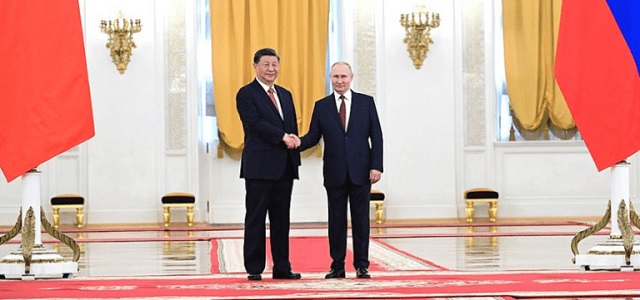
From the Macdonald Laurier Institute
By Serghey Sukhankin
Moscow – with China’s help, approval, and likely, guidance – intends to challenge the West by changing the rules of trade in foods critical to global buyers.
Throughout its entire history the Soviet Union faced one existential peril that was never solved until its collapse in 1991 – the prospect of food shortage and mass starvation. Its cumbersome, utterly ineffective, and artificially subsidized agricultural sector was a living testament to the erroneous nature of a planned command-administrative economic model.
The situation with food and staples became so dire that starting from 1963 the Soviet Bloc (the USSR, Hungary, Bulgaria, and Czechoslovakia) started importing wheat from the United States, Canada, and Australia. This practice continued until the demise of the Soviet Empire. Everything changed after the collapse of the USSR and introduction of market-oriented reforms in Russia in the 1990s, along with the growth of commodity prices and Russia’s inclusion in the global economic architecture.
By 2000, Russia had already doubled the amount of grain it produced, making it one of the world’s top producers of this strategic commodity. By the late 2010s to early 2020s, Russia emerged as a one of the world’s largest exporters of grain and agricultural products.
However, Russia quickly realized that commodities – especially food along with hydrocarbons – could become a very useful tool of coercion in geopolitical confrontations with its rivals. This became abundantly clear after the outbreak of Russia’s full-scale war of aggression against Ukraine in 2022, when both Russia’s top-tier politicians (such as Deputy Chairman of the Security Council and former President Dmitry Medvedev) and chief propagandists (such as Margarita Simonyan, the editor-in-chief of the Russian state-controlled broadcaster RT) claimed “hunger” to be Russia’s natural ally, and threaten to cut supplies of food staples to “unfriendly countries.”
At the same time, Russia tried to spark a confrontation between Ukraine and Poland, Hungary, Slovakia over commodities and staples supplies. Ironically, rather than hurting the West, Russia’s actions had a worse impact on so-called “friendly countries” – especially those in the Global South, where access to inexpensive and available foodstuffs is a matter of life and death.
Russia’s strategy of intimidation was also ineffective due to its invasion of Ukraine in February 2022. Its so-called “special military operation” was supposed to be quick and decisive. Two years later, the war has imposed massive pressure on the Russian budget, requiring a constant cash flow that mainly comes from exporting raw materials and commodities.
Forced to evolve its strategy, Russia seems to be abandoning its plan of threatening to starve its adversaries. Instead, Moscow – with China’s help, approval, and likely, guidance – intends to challenge the West by changing the rules of trade in foods critical to global buyers. This strategy is being implemented via pursuit of two interrelated initiatives: formation of a “Grain Entente” between Beijing and Moscow, and the use of the BRICS trading bloc (consisting of nine nations led by founding countries Brazil, Russia, India, China, and South Africa) as a critical vehicle of change.
The first major step in this direction was made in October 2023, when the Russian Food Export Trade LLC company and China Chengtong International Limited concluded the “grain deal of the century” – the largest contract of this type ever signed between the two countries – according to which the Russian side pledges to deliver 70 million tons of various types of grain (produced in the Urals, Siberia, and the Far East) over the next twelve years for US$26.5 billion. As a result, already in the first quarter of 2024, Russia broke a historical record by supplying China with large volumes of oats (.7 times more than the previous year) and buckwheat (3.3 more than the previous year) receiving a staggering US$127 million. Yet, mounting grain sales is only the tip of the iceberg. The most critical development is China’s gradual overtaking of Russia’s logistical infrastructure, which could pave the way for China’s growing control over Eurasian logistics and trade routes.
In September 2023, officials from Russia and China met at the 8th Eastern Economic Summit in Vladivostok, where officials from Russia and China agreed to create a logistical hub – the “Grain Terminal Nizhneleninskoye–Tongjiang” in the Jewish Autonomous Oblast. The goal is to create the Russia’s first “land-based grain fleet.” Consisting of 22,000 containers transporting grain, it will be capable of moving up to 600,000 tons of grain with a maximum storage capacity of up to 8 million per year. The strategic significance of this move is clear. On one hand, it allows Russia to “safeguard” itself against sanctions pressure, which will likely make Russia’s behaviour in Europe (and elsewhere) even more aggressive and unpredictable. On the other hand, China – which will acquire de facto control over Russia’s grain – will see Beijing become the world’s largest grain hub, giving it enormous power to influence and set global food prices.
Russia’s next major move was to push for the creation of a BRICS grain exchange. Fully supported by Russian President Vladimir Putin, the proposed grain exchange would bring together some of the world’s biggest grain buyers and exporters, cumulatively accounting for more than 42 per cent of global grain production (at nearly 1.2 million ) and 40 per cent of global consumption. International observers and subject experts have already warned that Russia- and China- adverse exporters of grain and agricultural products such as the United States, Canada, and Australia “might face challenges in maintaining their market share and negotiating for favourable trade terms, while facing competition from cheaper Russian .” In effect, this may have “significant implications for global agricultural dynamics, ranging from geopolitical and geoeconomic realignments to increased competition in agricultural trade. For traditional exporters such as Australia and the US, it is a call to reassess their national policies and strategies to navigate the evolving landscape of international trade to maintain competitiveness.”
The emergence of the BRICS grain exchange – which will undoubtedly increase Russia’s (and most likely China’s) geoeconomic role – is only a part of a much bigger strategic challenge. If the BRICS grain exchange is successful, it will have a spillover effect on another critical product – the fertilizers required by both developed and developing nations. Russia already has a competitive advantage in fertilizer production, and post-2022, has tried to use its fertilizers as geopolitical tools pressuring international organizations (such as the United Nations) to lobby for the end of sanctions imposed on Russia after its full-scale invasion of Ukraine.
– If the Russia-China grain alliance proliferates and BRICS becomes a major player in the global flow of grains and other foodstuffs, it could prompt even greater changes to the established world market. Analysis of Russian-language sources and publications indicates that the next step would be the creation of an alternative to the “West-dominated” financial architecture, and ultimately, the transformation of global trade.
Russia’s plans (undoubtedly supported by China) pose a very serious challenge to Canada, its allies, and other liberal democracies.
They will likely suffer economic losses of grain exports due to the cheapness of Russian grain, and that country’s current occupation of a large part of Ukraine’s most fertile black-earth areas. If unchecked, Russia could assume control of more than 30 percent of global grain supplies.
Currently, the Indo-Pacific region is Canada’s largest export destination, with agriculture and food exports totaling $9.4 billion in 2022. If China gains unfettered access to Russian grain, it could seriously undercut Canada’s trade.
Making matters worse for Canada, its relationship with New Delhi is arguably at an all-time low, making it challenging to pivot sales of its agricultural products toward India or other countries without significant economic losses.
Looking at the bigger picture, there are a host of other potential threats to the global foods market, from the ongoing war in Ukraine to droughts and adverse climate conditions in the US, Argentina, and Australia. Amid growing uncertainty and upheaval, it’s possible that the global foods market will be carved up and dominated by Russia and other undemocratic, aggressive nations. Given Russia’s strategic goal of weakening the European Union, and ultimately causing its disintegration, it will continue to use artificially created food shortages in Africa and the Greater Middle East as a geopolitical weapon against the EU. The Kremlin hopes to replicate the crisis that occurred in 2015, when hundreds of thousands (now, potentially millions) of illegal migrants and asylum seekers poured into the EU – wreaking havoc, fostering intra-EU conflict, and assisting the rise of far-right (and left) populists.
The first step in Russia’s grand strategy is the de facto establishment of the Russo-Chinese “Grain Entente.” The next move will be the creation of a BRICS grain exchange and inclusion of other strategic commodities under the umbrella of BRICS operations. This is clearly a wakeup call for the West. We need to heed it, or else risk more dire, far-reaching consequences.
Dr. Sergey Sukhankin is a Senior Fellow at the Jamestown Foundation (Washington, DC) and a Fellow at the North American and Arctic Defence and Security Network (NAADSN). His project discussing the activities of Russian PMCs, “War by Other Means,” informed the United Nations General Assembly report entitled “Use of Mercenaries as a Means of Violating Human Rights and Impeding the Exercise of the Right of Peoples to Self-Determination.”
This article was published with support from Konrad-Adenauer-Stiftung Canada.
Agriculture
Farming group accuses Canadian gov’t of trying to blame agriculture for ‘climate change’
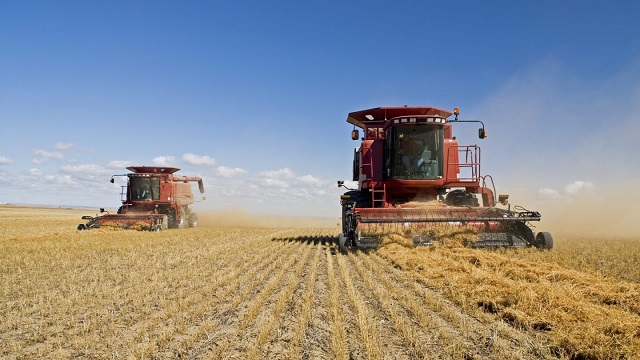
From LifeSiteNews
Grain Farmers of Ontario chairman Jeff Harrison contends that the government’s goal of reducing emissions is not realistic and that the ‘vilification strategy’ is causing more consternation for farmers.
One of Canada’s largest farming groups has said the Liberal federal government of Prime Minister Justin Trudeau is directly going after farmers via a “vilification strategy” under the guise of “climate change” and that a recent Auditor General report proves this to be true.
Grain Farmers of Ontario chairman Jeff Harrison recently said that the Trudeau government’s request to farmers to reduce emissions is not realistic and that it only creates more issues for Canadian farmers.
“Painting this climate picture as the fault of agriculture, it vilifies farmers,” said Harrison, noting it’s a “vilification strategy” to pin the blame on farmers.
“It’s part of the added stress on farmers that they are expected to do the unachievable. They’re expected to solve a problem that they didn’t necessarily create,” he observed.
Harrison’s comments were made after a recent Auditor General report titled “Agriculture and Climate Change Mitigation” picked to pieces the Trudeau government’s voluntary 30 percent emission reduction target by 2030 through curbing fertilizer use for farmers.
The United Nations has declared a war on nitrogen, claiming its use must be slowed as it is “one of the most important pollution issues facing humans.”
However, nitrogen, which is found in fertilizers, makes up about 70 percent of Earth’s air and is essential for plants.
The Auditor General report noted that there is widespread mismanagement along with a lack of transparency from the federal programs. Notably, there was a lack of consultation with stakeholders in the farming industry, as well as farming associations, before the government put in place random fertilizer emission reduction targets.
Harrison noted that such reduction targets are “unachievable targets and unrealistic goals,” adding that such targets “p—– me off, to be honest.”
The war on farmers not unique to Canada
Farmers worldwide are facing increased pressure from governments and special interest groups linked to globalists organizations such as the World Economic Fourm to reduce fertilizer use. Indeed, as recently observed by Dr. Joseph Mercola with LifeSiteNews, the global push to get rid of farmers “from their land is being driven by NGOs, which are primarily funded by the government, making them government extensions.”
“The real agenda, however, may be traced back to the Club of Rome, a think tank that aligned with neo-malthusianism – the idea that an overly large population would decimate resources – and was intending to implement a global depopulation agenda,” Mercola wrote.
“Once the farmers are pushed out, globalists suggest eating bugs will protect the planet by eliminating the need for livestock, cutting down on agricultural land use and protecting the environment. The U.N.’s Food and Agriculture Organization also encourages the consumption of insects and insect-based foods, and the momentum to get farmers off their land is continuing to gain steam.”
Trudeau’s government is trying to force net-zero regulations on all Canadian provinces, notably on electricity generation, as early as 2035. The provinces of Alberta and Saskatchewan are adamantly opposed to Trudeau’s 2035 goals.
The Trudeau government’s current environmental goals, which are in lockstep with the United Nations’ 2030 Agenda for Sustainable Development, include phasing out coal-fired power plants, reducing fertilizer usage, and curbing natural gas use over the coming decades.
Pressure on farmers from Feds comes at same time they are dealing with higher suicide rates
When it comes to Canada’s farmers, they have already been under pressure with increased costs of fuel, not to mention all basic goods and items needed to run a farm, thanks to high inflation due in part to federal overspending.
More concerningly, increased pressures on farmers to curtail fertilizer use, and thus be faced with lower yields, come at the same time that recent studies show suicidal thoughts among farmers at extremely elevated levels.
The 2022 study from Ontario’s University of Guelph found nearly one-third of farmers have “had thoughts of suicide in the last 12 months.” The numbers are more than two times above the general population of Canada.
According to the study, about three-quarters of participating farmers experience “moderate to high-stress and half experience anxiety or depression.”
Adding to their stress, on April 1, Canada’s carbon tax, which was introduced by the government of Trudeau in 2019, increased from $65 to $85 per tonne despite seven of 10 provincial premiers objecting to the increase, and 70% of Canadians saying they are against it.
Trudeau has remained adamant that he will not pause the hikes.
He has pitched his carbon tax as the best way to reduce so-called carbon emissions. However, the tax has added extra financial burdens on households despite hundreds of dollars of rebates per family.
To reach Trudeau’s goal of net zero by 2050, the carbon tax would have to balloon to $350 per tonne.
The reduction and eventual elimination of the use of so-called “fossil fuels” and a transition to unreliable “green” energy has been pushed by the World Economic Forum (WEF) – the globalist group behind the socialist “Great Reset” agenda in which Trudeau and some of his cabinet are involved.
-

 Agriculture14 hours ago
Agriculture14 hours agoThe China – Russia “Grain Entente” – what is at stake for Canada and its allies?
-

 Automotive24 hours ago
Automotive24 hours agoEV transition stalls despite government mandates and billion-dollar handouts
-
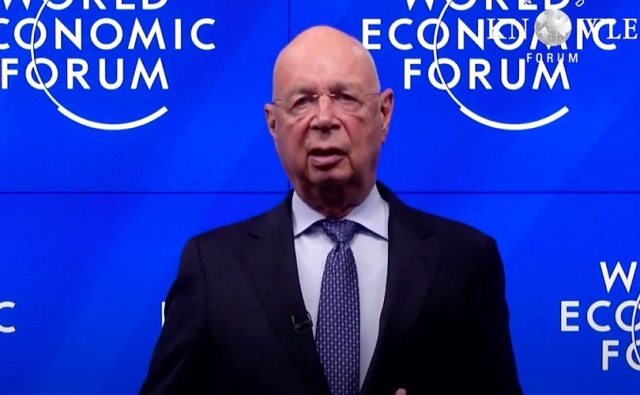
 Great Reset14 hours ago
Great Reset14 hours agoDr. Robert Malone reacts to Klaus Schwab’s resignation: ‘Resistance is not futile’
-
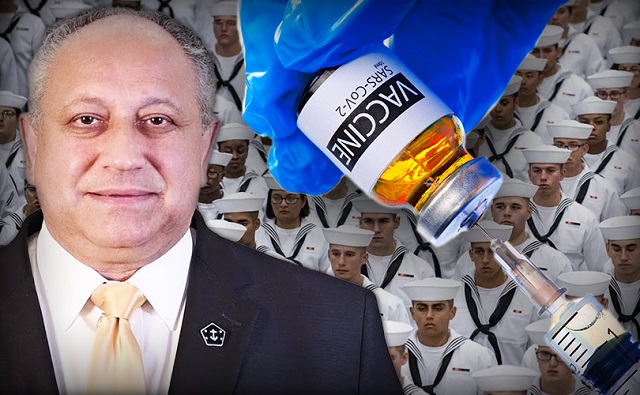
 COVID-192 days ago
COVID-192 days agoBiden’s Navy secretary says he has ‘no regrets’ about firing 5,000+ unvaxxed sailors, Marines
-
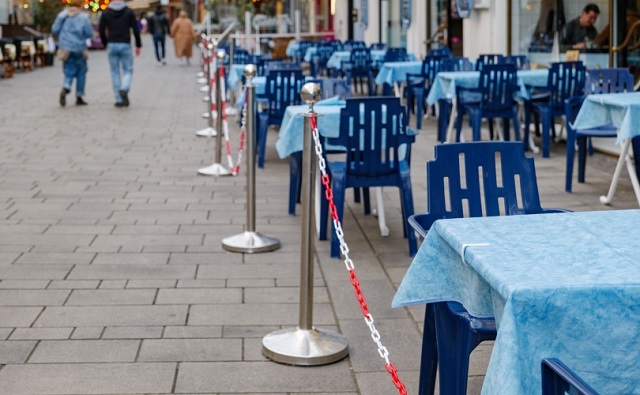
 COVID-192 days ago
COVID-192 days agoSaskatchewan appeals court upholds COVID-era gov’t restrictions on outdoor gatherings
-

 International2 days ago
International2 days agoFormer GOP Republican Presidential Candidate Buys Activist Stake In Left-Wing Outlet
-
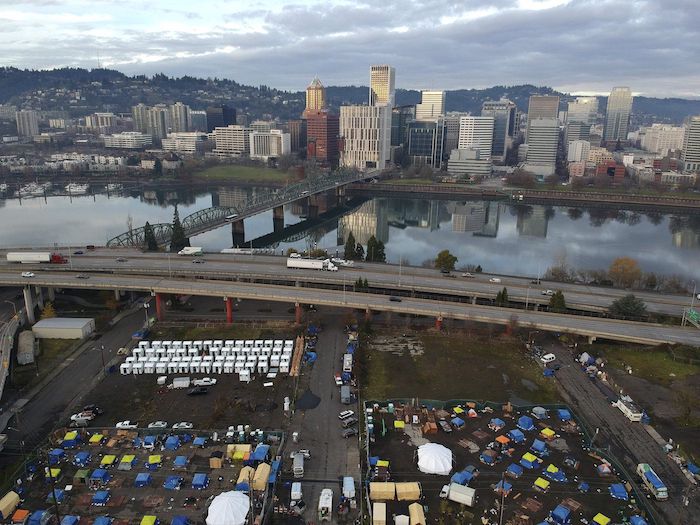
 Crime2 days ago
Crime2 days agoSoros-Backed DA Poised To Lose To Challenger In Ultra-Liberal County
-
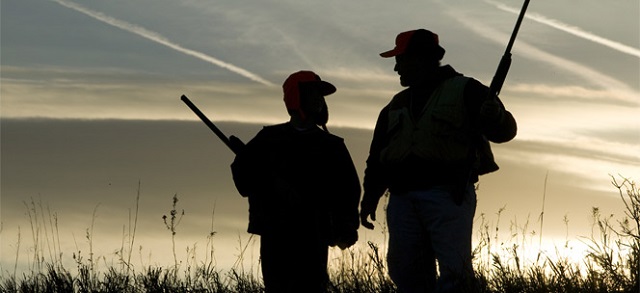
 National2 days ago
National2 days agoParks Canada deer hunt project to cost taxpayers $12 million

